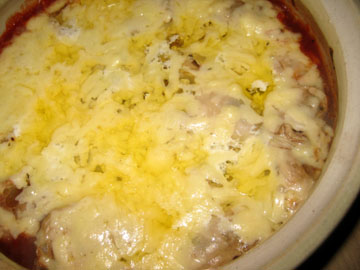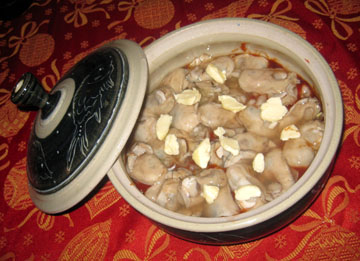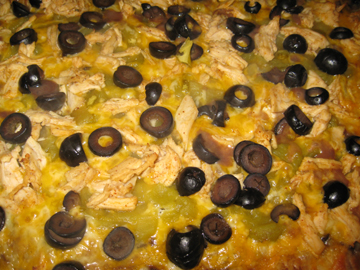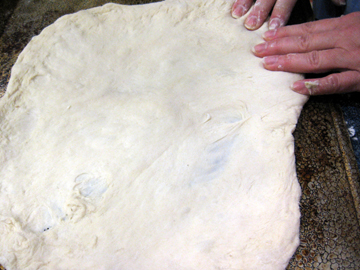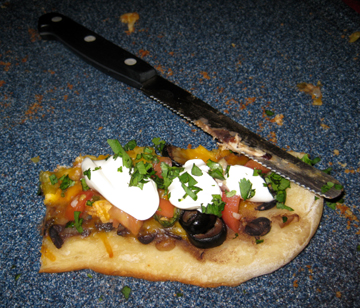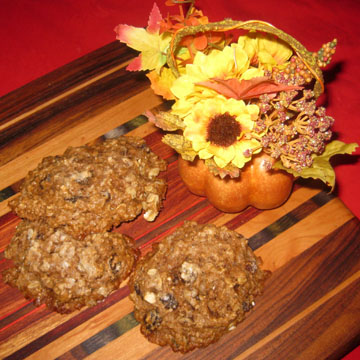
Frank Loesser composed the song “What Are You Doing New Year’s Eve?” in 1947.
According to Susan Loesser’s biography of her father, A Most Remarkable Fella, the singer of the song is supposed to be asking the title question in the early spring, thinking ahead and hoping that a new relationship will last until December.
“It always annoyed my father when the song was sung during the holidays,” the composer’s daughter writes.
When a songwriter publishes a song and sends it out into the world, however, the song can be reinterpreted over and over again—and Frank Loesser has clearly lost the battle of New Year’s Eve.
His song perfectly epitomizes the mixture of reflection, hope, and sleepiness we feel as midnight looms on December 31. It’s a lovely piece—slightly jazzy and easy to sing because the melody makes the lyrics seem effortless, like conversation.
Maybe it’s much too early in the game.
Ah, but I thought I’d ask you just the same:
What are you doing New Year’s, New Year’s Eve?
I’ll definitely be singing it tonight as part of a set Alice Parker and I are performing at the Charlemont Inn. And this afternoon as I vocalize I plan to make bannocks—at least, my version of bannocks.
Bannocks are one of the traditional Scottish foods associated with the celebration of Hogmanay. This Scottish New Year holiday begins on New Year’s Eve (sometimes even earlier) and extends into New Year’s Day (sometimes even later).
Hogmanay is a major festival in Scotland these days, not unlike July 14 in France. A Scottish website, Hogmanay.net, documents many of the contemporary celebrations and offers some history as well as an opportunity to sing “Auld Lang Syne” by following a bouncing ball.
According to Hogmanay lore, the New Year will be prosperous if a dark stranger is the first person to cross one’s threshold in the New Year. The stranger is supposed to bring a token gift, often a lump of coal to keep the fire warm. The homeowner reciprocates with refreshment.
A typical refreshment offered is a bannock, an oatmeal cake that according to varying accounts resembles a scone—or a pancake—or a cookie.
I’ve never tasted an authentic bannock, and I encourage readers with recipes to send them in! In the meantime, I’m baking my version of this treat, which is distinctly scone like.
I love the word “bannock.” It sounds solid and practical. My bannocks are also solid (although not hard!) and taste pleasantly of country life.
It’s unlikely that a dark and handsome stranger will cross my threshold at midnight.
Snow is predicted late this evening in Hawley, Massachusetts, and the town tends to be geriatric so any handsome stranger who actually makes it up my steep hill will probably be silver haired. But a girl can always hope.
If no stranger shows up, we’ll eat the bannocks for breakfast on New Year’s Day.
Happy New Year to all! I look forward to singing and cooking with you in 2010…

- Thanks to Pru Berry for the impromptu photo!
Tinky’s Inauthentic but Tasty Bannocks
Ingredients:
1 cup flour
1/2 cup oatmeal (not quick cooking)
1/2 cup blended oatmeal (put oats in your blender and pulverize them into a flour-like consistency; then measure out 1/2 cup)
1/2 cup brown sugar, firmly packed
1-1/2 teaspoons baking power
1 teaspoon baking soda
1/2 teaspoon salt
1 teaspoon cinnamon
1/2 cup (1 stick) sweet butter
2/3 cup raisins
1/2 to 2/3 cup buttermilk
1 egg
1/2 teaspoon vanilla
white sugar for the top of the bannocks
Instructions:
Preheat the oven to 325 and lightly grease two cookie sheets (or line them with silicone or parchment).
In a medium bowl combine the flour, oatmeals, brown sugar, baking powder, baking soda, salt, and cinnamon.
Cut in the butter; then stir in the raisins.
In a mixing cup whisk together 1/2 cup buttermilk, the egg, and the vanilla. Stir this mixture into the dry ingredients. If the batter won’t quite hold together, add a little more buttermilk.
Drop the bannock batter into 12 mounds on the prepared cookie sheets. Sprinkle a little sugar on the top of each mound.
Bake the bannocks for 18 to 25 minutes, until they are brown on the edges. Let the bannocks cool on the cookie sheets for a minute or two before serving them warm. (If you can’t use them right away, reheat them briefly before serving; they’re best eaten quite fresh from the oven.)
Makes 12 bannocks.
If you enjoyed this post, please consider taking out an email subscription to my blog. Just click on the link below!
Subscribe to In Our Grandmothers’ Kitchens by Email.
